January 2, 2020
Carolyn’s desire to see more pre-Columbian ruins led us to the village of San Cristobal de las Casas, high in the mountains in southern Mexico. We’re at 6600 feet, 16 degrees north of the Equator, in another charming colonial village of about 450, 000 people. The village dates from 1528, with some of the historical buildings dating 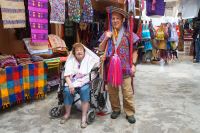
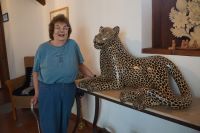 to the 16th and 17th century, and the old historic district chock full of one story buildings in pastels, with iron bars on windows, and lots of charming residences and shops restored as hotels (we’re in the Casa San Lucia, with antiques, paintings, and jaguar statues), shops, or restaurants, and narrow cobbled streets full of tourists and locals.
to the 16th and 17th century, and the old historic district chock full of one story buildings in pastels, with iron bars on windows, and lots of charming residences and shops restored as hotels (we’re in the Casa San Lucia, with antiques, paintings, and jaguar statues), shops, or restaurants, and narrow cobbled streets full of tourists and locals.
You can tell the locals, since Chiapas state is storied. Once administered as part of Guatemala under the Spanish, the state opted to join Mexico in 1824, shortly after independence. Its subsequent history has been sometimes troubled, since the indigenous Indians have had the short stick ever since the Spanish invasion. There were a number of uprisings, most recently in the 1990s, that brought federal troops to crush the Zapatistas, but really led to more autonomy for the 8 local tribes, descendants of the Mayans and still speaking languages that are closer to what they spoke in 900 than to Spanish.
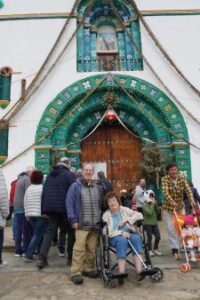 We went to two of those semiautonomous villages today, San Juan Chemula, and Zincantan. The centerpiece of both were the churches, with a big difference. In Chemula, the arch over the church is decorated with animals and butterflies, rather than Saints. Inside, the locals were having a service with the village elders in white tunics and the religious clergy in black praying for the entire community. Locals came with their family to hire a holy person to pray for them, and brought offerings, including live chickens to be sacrifices (and turned into chicken soup), and coke and other carbonated drinks to induce a burp and chase away evil spirits. I read somewhere that the church no longer considers the building “Catholic,” and I can only imagine how the Dominicans (they who not only settled and evangelized here, but also brought the Inquisition to the New World) would respond.
We went to two of those semiautonomous villages today, San Juan Chemula, and Zincantan. The centerpiece of both were the churches, with a big difference. In Chemula, the arch over the church is decorated with animals and butterflies, rather than Saints. Inside, the locals were having a service with the village elders in white tunics and the religious clergy in black praying for the entire community. Locals came with their family to hire a holy person to pray for them, and brought offerings, including live chickens to be sacrifices (and turned into chicken soup), and coke and other carbonated drinks to induce a burp and chase away evil spirits. I read somewhere that the church no longer considers the building “Catholic,” and I can only imagine how the Dominicans (they who not only settled and evangelized here, but also brought the Inquisition to the New World) would respond.
San Cristobal brought wheat and wood as its contributions to Spain, and that led to the settlement’s prosperity for the non-indigenous peoples. The area is still a rich agricultural region (Zincantan greeted us with enormous greenhouses) but tourism, I suspect, is what keeps this region green.
Originally called Ciudad Real, it was renamed after independence in honor of St. Christopher, protector of travelers, and I think the Saint’s day when the Spanish founded the city, and became de las Casas in honor of Bartholomew de las Casas, an early bishop that did his best to end Indian slavery, and whose statue embellishes one of the major squares in the city.
We spent some time sightseeing—the colonial square with the (smaller) copy of the government headquarters on one end of the main square, the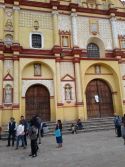 cathedral resplendent as so much of the city in pastels, and a visit to a museum that was once the Dominican
cathedral resplendent as so much of the city in pastels, and a visit to a museum that was once the Dominican 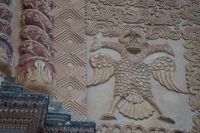 Monastery (all church property was confiscated by the federal government in the 1860s; it is sometimes loaned today to the churches) that included some of the artifacts found by the foreign archeologists who made San Cristobal home.
Monastery (all church property was confiscated by the federal government in the 1860s; it is sometimes loaned today to the churches) that included some of the artifacts found by the foreign archeologists who made San Cristobal home.
Tomorrow we descend to the jungle for the massive ruins of Palenque, which was one of the main objectives of this trip.